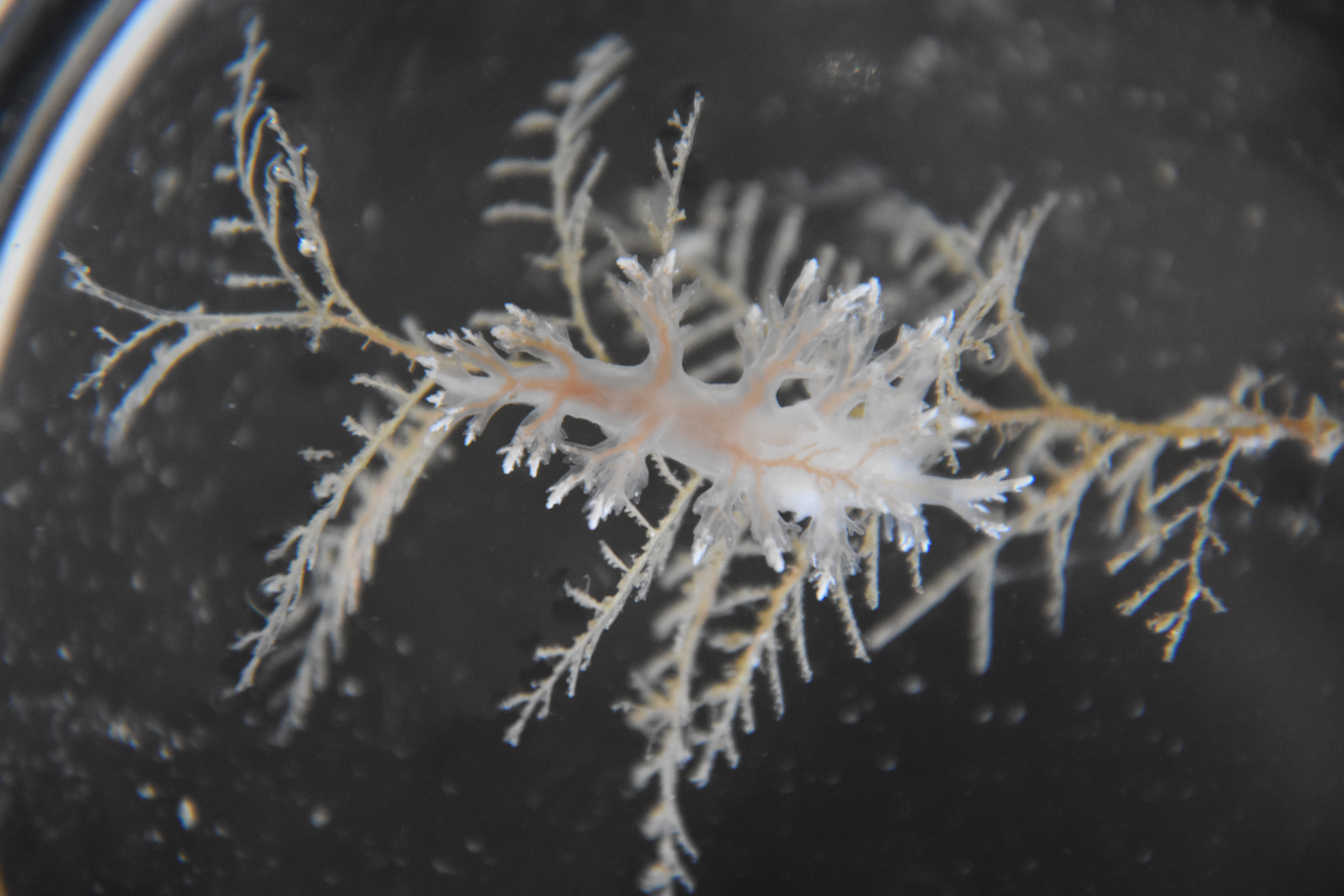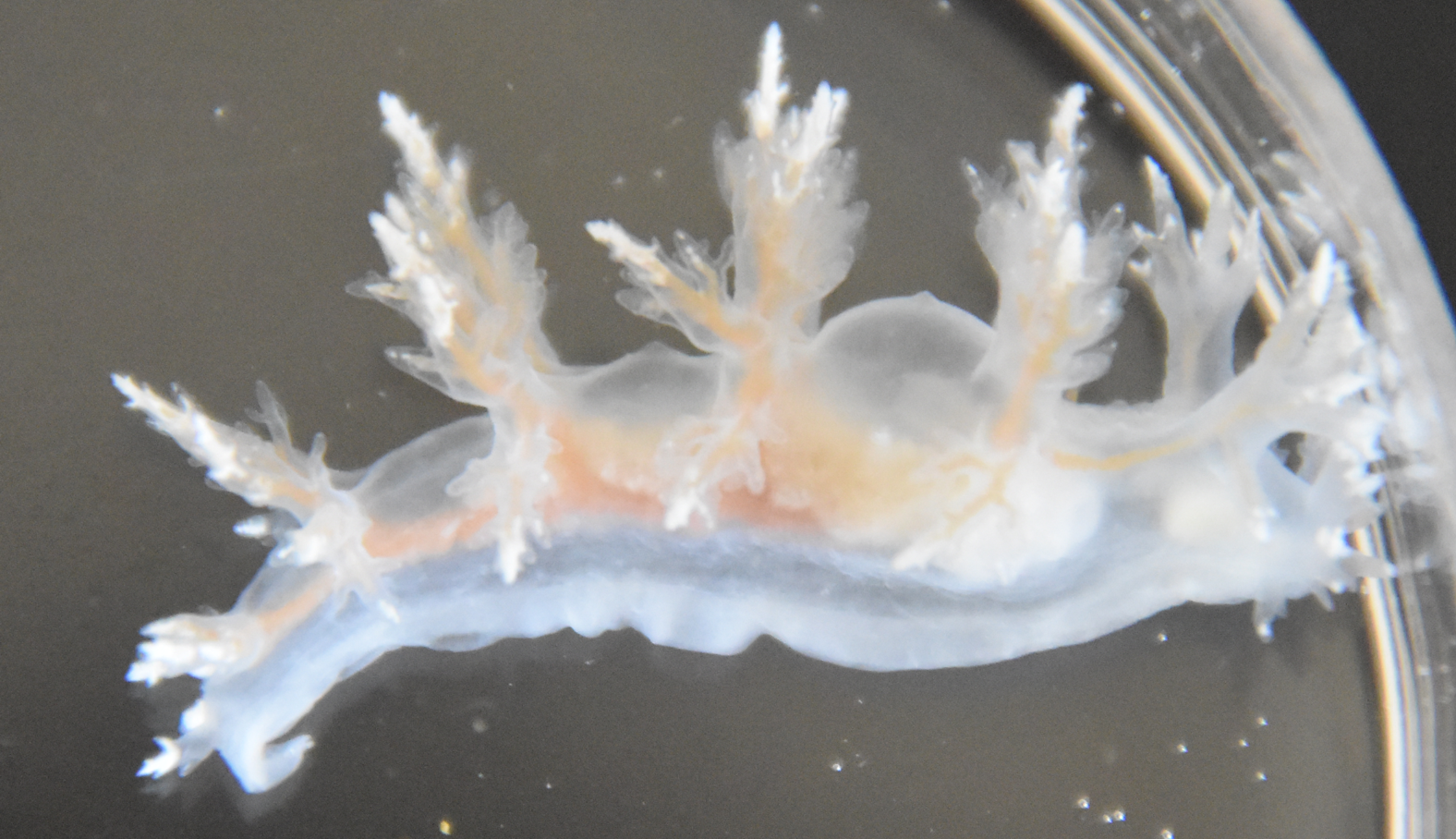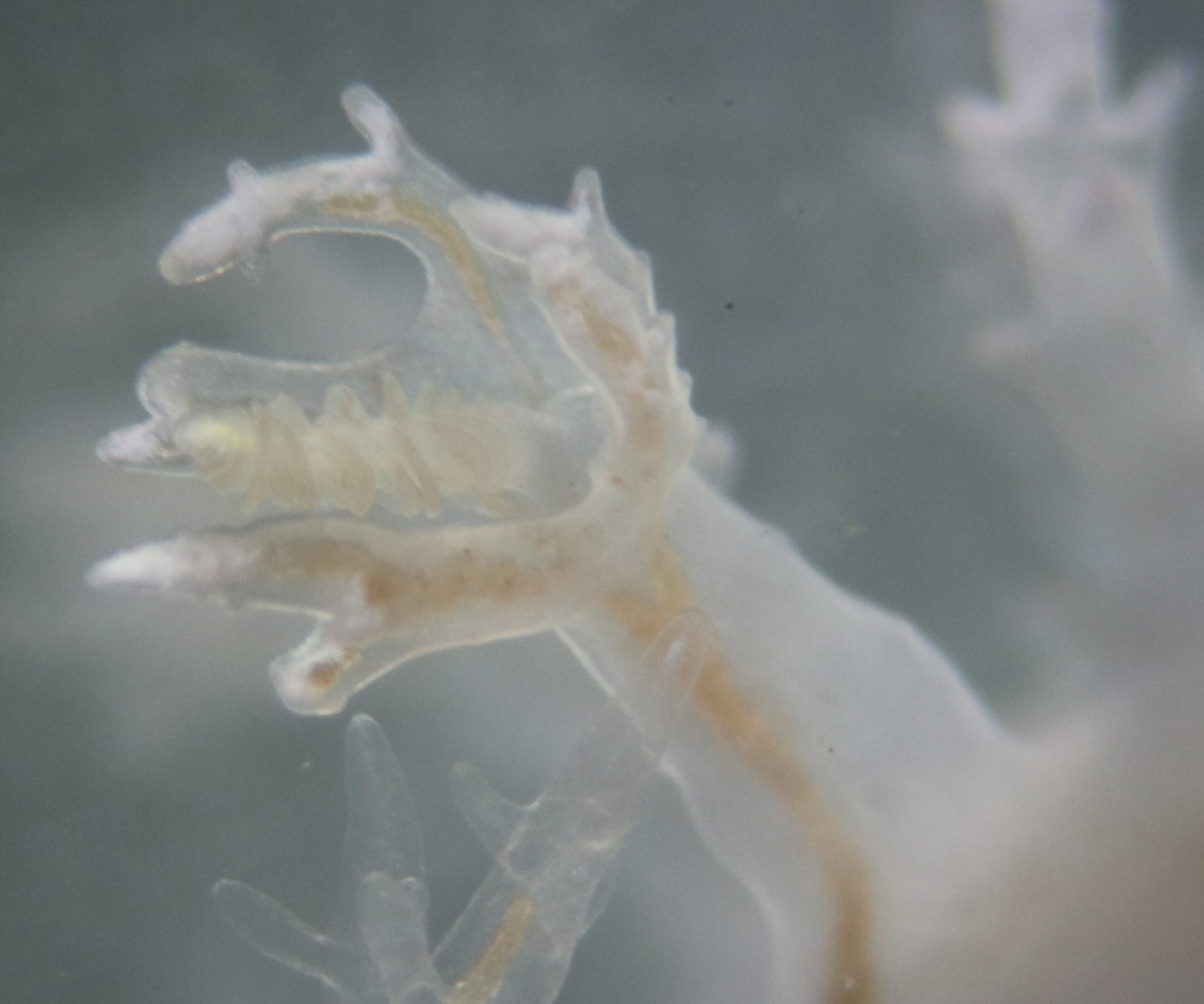Dendronotus dalli Bergh, 1879Common name(s): Dall's dendronotid |
|
| Synonyms: Dendronotus elegans |  |
|
Class Gastropoda
Family Dendronotidae
|
|
| Dendronotus dalli crawling along an Abietenaria hydroid, on which it feeds. Length about 2.5 cm. | |
| (Photo by: Dave Cowles, July 2020) | |
Description: Dendronotid nudibranchs have the anus is on the right side of the body and the dorsum has cerata or gills. If cerata, they are usually in 2 dorsolateral longitudinal rows. The clavus of the rhinophores can be fully or at least partly retracted into a sheath. Dendronotus dalli has an elongated, sluglike body with two longitudinal rows of 6-7 pairs of very bushy, fanlike cerata along the dorsum without accessory cerata between them (photo). It has no oral hood but prominant, bushy, perfoliate rhinophores with branched papillae on the sheath that give them a crownlike shape (photo). The rhinophore stalks have no outgrowths on their posterior border. The oral veil is not large, only slightly overhangs the mouth, and has 4-5 pairs of short, moderately branched papillae. The lips usually have 30 or more simple, fingerlike papillae. There is no red or opaque white line around the foot nor 4 parallel reddish brown longitudinal lines. The body is translucent white to pink with opaque white on the distal third of the cerata and rhinophores. Length to 14 cm, but usually 4-8 cm.
How to Distinguish from Similar Species:Dendronotus rufa has a red line around the foot. Dendronotus iris has posterior outgrowths on the rhinophore stalk. D. albus,D. diversicolor, and D. frondosus are colored differently and have less extensively branched cerata.
Geographical Range: Northeast Pacific (Bering Sea to Puget Sound) and off New England (as the former D. elegans)
Depth Range:
Habitat: Often found on rocks, hydroids, or stalked bryozoans.
Biology/Natural
History: This species
feeds on Abietenaria
hydroids, as seen in the photo above.
| Return to: | |||
| Main Page | Alphabetic Index | Systematic Index | Glossary |
References:
Dichotomous Keys:Kozloff, 1987, 1996
General References:
Harbo,
2011
Scientific Articles:
Web sites:
General Notes and Observations: Locations, abundances, unusual behaviors:

In this side view the cerata
with short, bushy branches and strong white pigment on the ends can be
seen.

This closeup of the right rhinophore
shows the perfoliate
structure, the crownlike, branched, white-tipped papillae
on the stalk, and the fact that there are no papillae
on the posterior surface of the rhinophore
stalk. Anterior is to the right. Photo by Dave Cowles, July 2020
Authors and Editors
of Page:
Dave Cowles (2021): Created original page
CSS coding for page developed by Jonathan Cowles
Salish Sea Invertebrates web site provided courtesy of Walla
Walla University